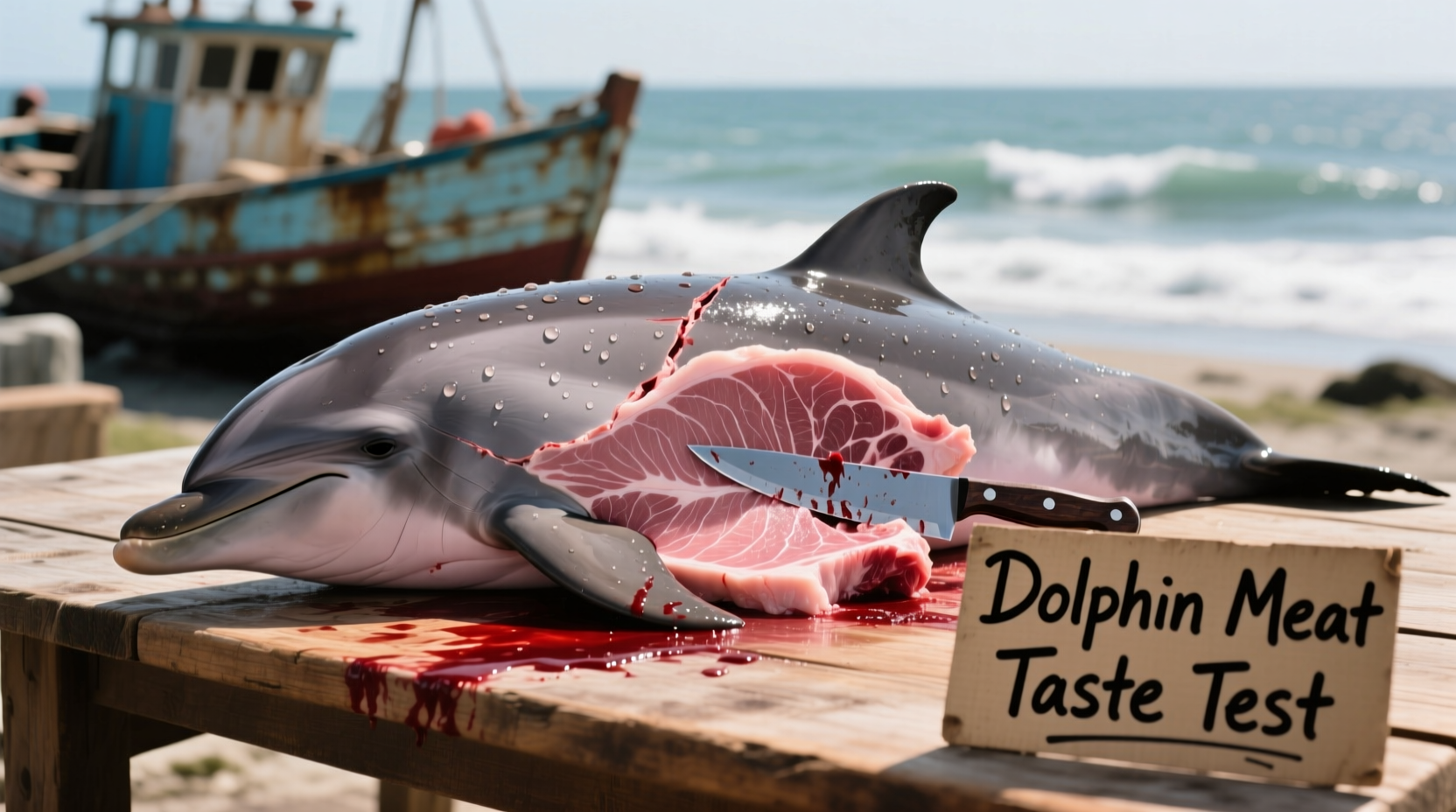Dolphin meat has a strong, gamey flavor often compared to terrestrial game meats like venison or beef liver, with a dense, dark texture similar to steak. Due to high mercury levels and ethical concerns, consuming dolphin is illegal in most countries and strongly discouraged by marine conservation organizations.
Understanding Dolphin Meat: Flavor Profile and Cultural Context
If you've ever wondered what dolphin tastes like, you're not alone. This question often stems from curiosity about exotic foods or encounters with cultural practices where dolphin consumption occurs. While most Western cultures consider dolphins intelligent marine mammals worthy of protection rather than food sources, understanding the culinary reality requires examining both the sensory experience and the complex ethical landscape.Where Dolphin Consumption Occurs: A Cultural Perspective
Dolphin meat consumption is limited to specific communities around the world, primarily in:- Traditional Faroese whaling (grindadráp) in the Faroe Islands
- Certain coastal communities in Japan (particularly Taiji)
- Some indigenous communities in the Solomon Islands
- Historically in parts of West Africa and the Caribbean
| Region | Legal Status | Frequency of Consumption | Cultural Significance |
|---|---|---|---|
| Faroe Islands | Legal under traditional hunting rights | Seasonal (summer months) | Centuries-old community food sharing tradition |
| Japan | Legal but controversial | Declining due to international pressure | Historical coastal community practice |
| Solomon Islands | Legal under customary rights | Occasional | Traditional protein source |
| Most Western Countries | Illegal | None | Protected species |
The Distinctive Taste Profile of Dolphin Meat
Based on culinary reports from regions where consumption occurs, dolphin meat has several distinctive characteristics:- Color and texture: Deep red to black, extremely dense and fibrous, similar to beef heart or venison but with higher fat content
- Flavor profile: Intensely gamey with metallic undertones, often described as "fishy beef" or "ocean-aged venison"
- Cooking methods: Typically served raw (as sashimi), dried, or boiled due to its tough texture
- Aftertaste: Lingering oily sensation with a distinct marine salinity

Health and Safety Considerations
The U.S. Food and Drug Administration and World Health Organization strongly advise against consuming dolphin meat due to dangerously high mercury levels. Research from the Faroe Islands Health Service shows mercury concentrations in pilot whale (often grouped with dolphin consumption) can exceed 100 times safe consumption limits. The European Food Safety Authority notes that marine mammals at the top of the food chain accumulate toxins through biomagnification, making their meat potentially hazardous for regular consumption.Legal Status and Conservation Concerns
Most countries prohibit dolphin hunting and consumption under international agreements like CITES (Convention on International Trade in Endangered Species). The Marine Mammal Protection Act in the United States explicitly bans the import, export, and sale of dolphin products. According to NOAA Fisheries, dolphins' high intelligence, complex social structures, and slow reproductive rates make them particularly vulnerable to population decline from hunting practices.Culinary Comparisons: How Dolphin Stacks Against Other Marine Meats
Food anthropologists have documented how dolphin meat compares to other traditional marine protein sources:- vs Whale meat: Dolphin has a stronger flavor and darker color than most whale varieties
- vs Tuna: Significantly denser texture with much higher fat content
- vs Seal: Less oily than seal meat but with more pronounced gamey notes
- vs Beef liver: Similar iron-rich metallic taste but with distinctive marine undertones











 浙公网安备
33010002000092号
浙公网安备
33010002000092号 浙B2-20120091-4
浙B2-20120091-4